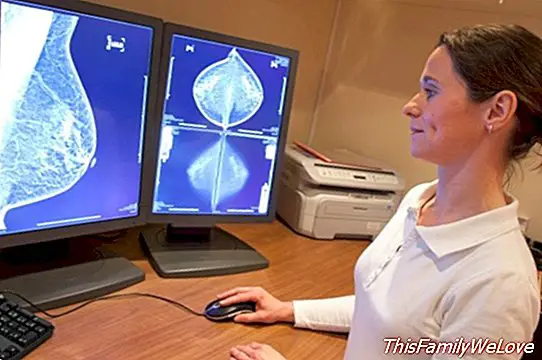Magnetic resonance imaging of the breast for early diagnosis

Today there are great advances in both treatment and early diagnosis of breast cancer. Medical tests increasingly offer better results that provide useful and detailed information on the state of the tumor, so that specialists can decide what is the best treatment for each patient. This is the case of Magnetic Resonance (MR). Less known technique than mammography and ultrasound although increasingly used today due to its enormous sensitivity and usefulness in many cases.
What is breast MRI?
The MRI of the breast is a technique that uses radiofrequency magnets and waves for the acquisition of high quality and detailed images, thus avoiding the use of ionizing radiation.
Unlike mammography and ultrasound, the MRI of the breast It has a high sensitivity and allows the visualization of images in 3 dimensions achieving a high spatial resolution that, in many cases, is not achieved with the rest of conventional techniques.
When should a breast MRI be done?
1. As a screening test in high-risk patients: patients with a risk of breast cancer greater than 20%. In these cases mammography and mammary MRI will be performed after the age of 35 and ultrasound and mammary MRI below 35 years. These patients are:
- BRCA-1 or BRCA-2 genetic mutation.
- First degree relatives of patients with the BRCA-1 or 2 mutation.
- Patients who have received RT in the thorax before age 30.
- Other genetic anomalies: Sme. Li-Fraumeny, Sme. Peutz-Jeghers, Sme. Cowden.
2. As a diagnostic test: in order to achieve a more accurate diagnosis in some situations:
- In patients with occult breast carcinoma, that is, with metastasis or axillary involvement of unknown origin when mammography and ultrasound are normal. In these cases it has been shown that mammary MRI is able to detect mammary lesions that mammography and ultrasound do not see, when the origin of the metastases is in the breast.
- In patients in follow-up with a history of breast cancer: to differentiate scar from recurrence when there are doubts with conventional tests.
- In patients with carcinoma already diagnosed as a preoperative study: to assess both the size and extent of the tumor. It determines the extent of the disease in that breast and excludes disease in the contralateral. It provides greater sensitivity in the detection of invasive tumors.
- To solve doubts not clarified with conventional tests or in cases of clinical-radiological disagreements.
- In patients with implants or breast prostheses with suspected rupture not confirmed with conventional tests.
3. For therapeutic purposes: to modify or decide on possible treatments that the patient is receiving:
- In patients with cancer confirmed in treatment with Neoadjuvant Chemotherapy (before surgical treatment): to assess the response to chemotherapy treatment prior to surgery. When this response is favorable, it allows us, on the one hand, to reduce the amount of tissue that must be removed during surgery and, on the other hand, to obtain information about the prognosis of the disease.
- In patients with surgery for breast cancer with affected margins: to exclude residual disease.
Dr. Silvia Pérez Rodrigo Y Dr. José Luis Pérez Aranda. Radiological Unit of Mammary Pathology of the Hospital La Milagrosa, of Madrid.




